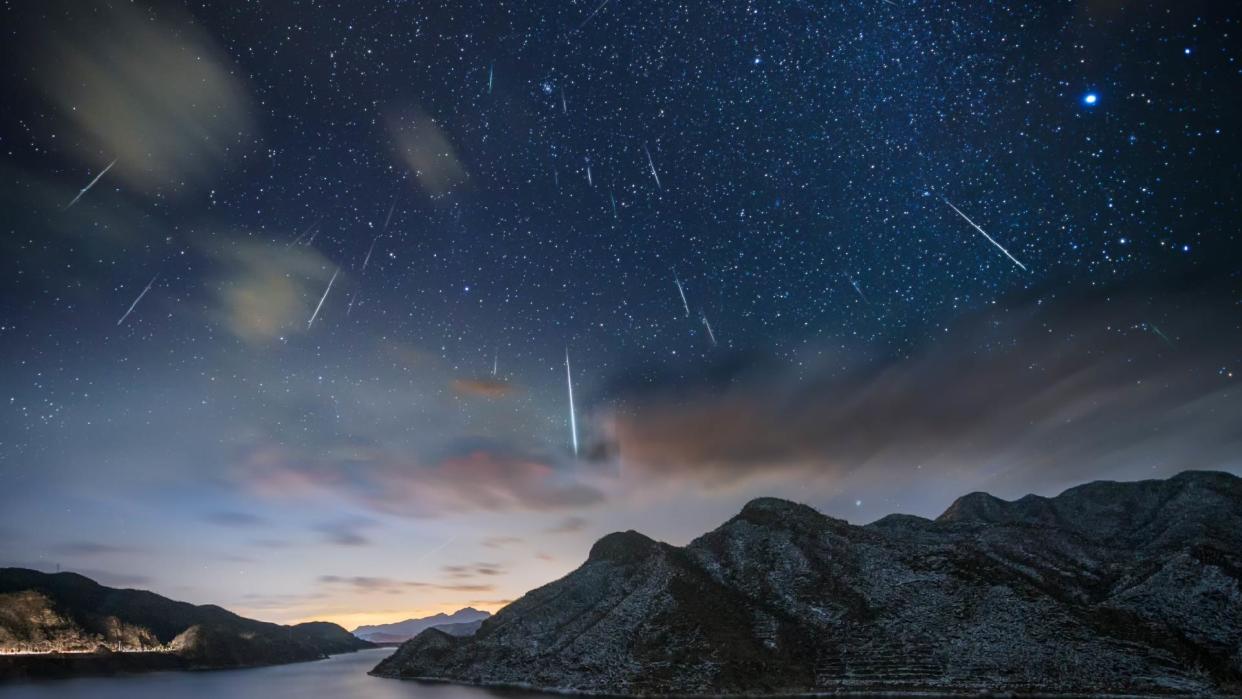See up to 50 'shooting stars' per hour as the Eta Aquarid meteor shower peaks this weekend

The Eta Aquarid meteor shower will peak this weekend, bringing up to 50 "shooting stars" per hour to the sky Saturday night and early Sunday (May 4 - 5). The annual meteor shower may have increased rates this year thanks to the gravitational influence of Jupiter, according to the American Meteor Society.
"Shooting stars" are caused by meteoroids. As these tiny particles strike Earth's atmosphere, they heat up and vaporize, releasing energy visible as streaks of light in the night sky. The Eta Aquarids move at a swift 40.7 miles per second (65.5 kilometers per second), and there are typically between 10 and 30 visible each hour during the peak night.
Fast meteors can leave glowing "trains" that last several seconds to minutes, according to NASA. The Eta Aquarid meteors appear to emanate from the constellation Aquarius, which is where they got their name. This constellation is higher in the sky in the Southern Hemisphere than in the Northern Hemisphere, so "Earthgrazers" — meteors that skim the horizon — are likely to be seen north of the equator.
Although this weekend's peak offers the highest frequency of meteors, the Eta Aquarids are active from April 15 to May 27.
related stories
—Never-before-seen crystals found in perfectly preserved meteorite dust
—Mars meteorite that crashed to Earth contains 'huge diversity' of organic compounds
The visibility of shooting stars depends a lot on the moon's phases. Luckily, a waning crescent moon will rise just before sunrise on May 5, meaning no strong moonlight will interfere with the peak of the Eta Aquarids this year. That makes it a good year to find a location with as little light pollution as possible, though a clear sky is also required. Stargazing binoculars and backyard telescopes are generally not recommended for seeing meteor showers, as you'll want to let your eyes take in the whole sky to search for shooting stars.
The root cause of the Eta Aquarids is Halley's comet, which last entered the inner solar system in 1986 and will enter it next in 2061. The comet reached its furthest point from the sun in December 2023, and is now headed our way again.
For the best chance to see "shooting stars," be out in the predawn hours and allow your eyes to adjust to the darkness. Night vision can take about 30 minutes to develop.

